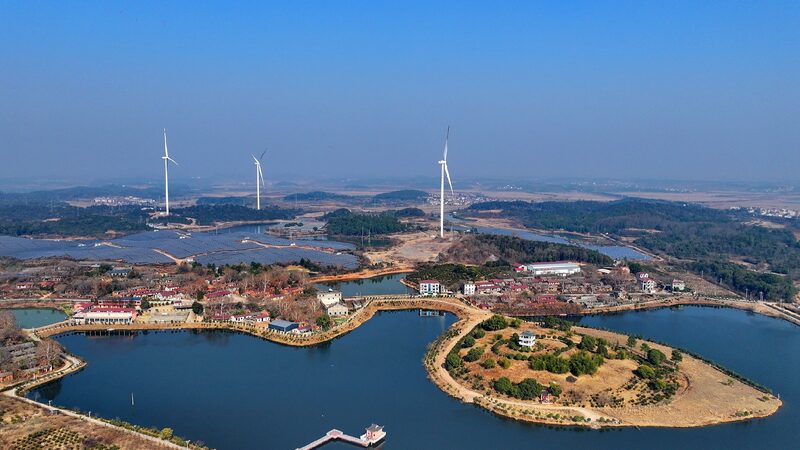Climate change is one of the most pressing issues facing our world today, and Asia finds itself at the forefront of both the challenges and the solutions. As temperatures rise and weather patterns become more extreme, countries across Asia are stepping up efforts to advance green development and chart a sustainable future.
Rising Challenges in a Warming World
Recent years have seen record-breaking temperatures globally. According to the European Union’s Copernicus Climate Change Service, January 2025 was the warmest month ever recorded, with February not far behind. These rising temperatures have led to alarming consequences: glaciers are melting faster than ever, atmospheric CO2 levels are at an 800,000-year high, and coral reefs are experiencing severe bleaching.
Asia has been hit hard by these changes. In 2024, several countries faced devastating climate-related disasters. The Persian Gulf experienced temperatures exceeding 54°C, surpassing the “extremely dangerous” threshold for several days. In Saudi Arabia, a brutal heatwave tragically claimed the lives of over 1,300 Hajj pilgrims.
The Funding Gap and Global Commitments
As extreme weather events become more frequent, the need for climate finance grows. Unfortunately, there’s a widening gap between the funds required and the commitments made by developed nations. UN Secretary-General António Guterres warned that by 2030, the annual shortfall for climate adaptation could reach $359 billion. This shortfall hampers efforts to build resilience against climate impacts, especially in vulnerable regions.
Opportunities for a Greener Asia
Despite these challenges, Asia is making significant strides toward a greener future. The global shift toward sustainable development is gaining momentum, and Asia is leading the way in renewable energy growth. In 2024, the International Renewable Energy Agency reported that Asia added 327.8 GW of renewable energy capacity, accounting for over 69% of the global total. This brings Asia’s total renewable capacity to 1,961 GW, more than half of the world’s total.
The region is also pioneering advancements in green technologies such as advanced battery materials, biodegradable plastics, green hydrogen, carbon capture, and digital carbon management. Innovations in artificial intelligence, like those demonstrated by companies such as DeepSeek, are creating new opportunities to lead the global green transition.
China’s Commitment to Green Development
China plays a pivotal role in this transformation. Committed to green development, China has set clear goals for peaking carbon emissions and achieving carbon neutrality. As the world’s largest operator of renewable energy systems and home to the biggest carbon market by covered emissions, China integrates sustainability into its national strategy. From 2012 to 2023, China maintained an average annual GDP growth rate of 6.1% while significantly reducing energy consumption growth and carbon emission intensity.
Moreover, China actively shares its climate mitigation expertise globally. By June 2024, China had signed over 50 climate cooperation agreements with 42 developing nations, offering assistance to strengthen their climate resilience.
Moving Forward Together
This year marks important anniversaries for both the United Nations and the Paris Agreement. As key players in global climate governance, Asian countries have the opportunity to enhance cooperation and work collectively under the UN framework. By upholding the principle of “common but differentiated responsibilities,” Asia can lead the charge against climate change.
The path ahead is challenging, but with concerted efforts and shared commitment, Asia can overcome obstacles and seize the opportunities presented by green development. The actions taken today will shape a sustainable future for generations to come.
Reference(s):
Advancing green development in Asia: Challenges and opportunities
cgtn.com






